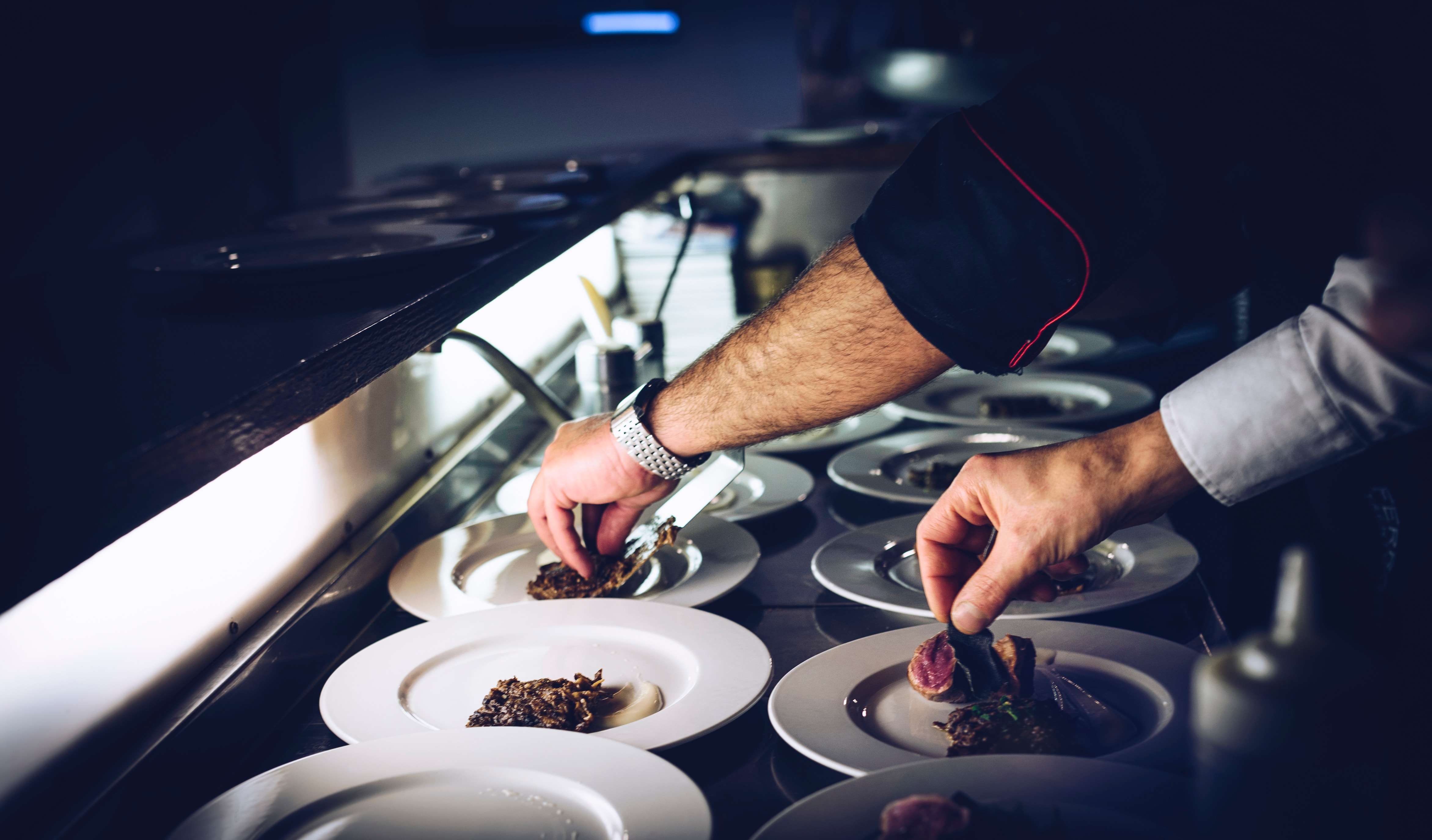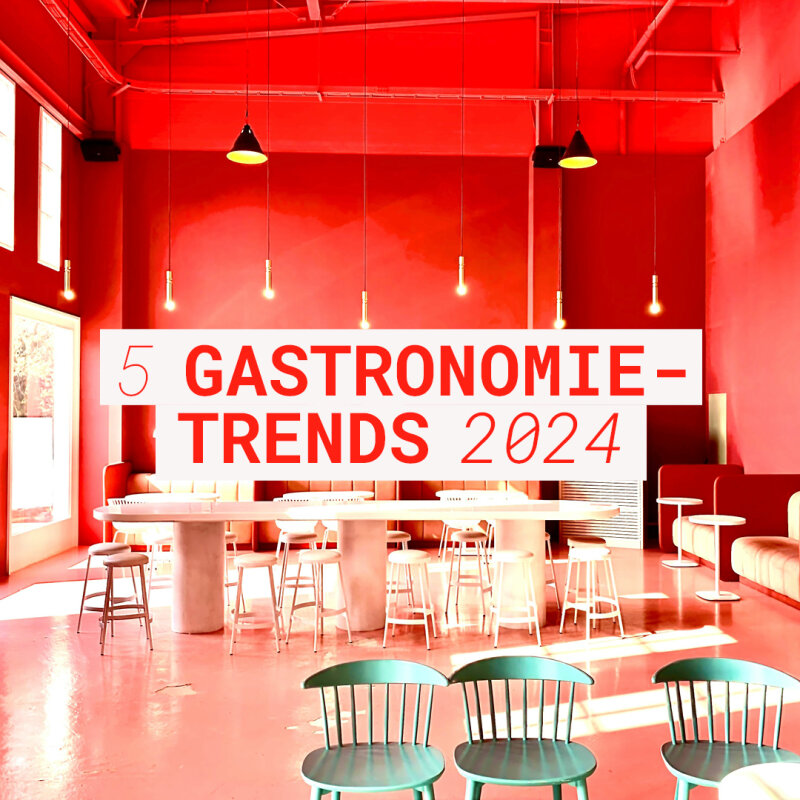2024 is shaping up to be a particularly challenging year for the industry. With rising prices, taxes, and overheads alongside cautious consumer spending, many restaurateurs are facing an uncertain future. What does it take to ensure that guests continue to enjoy dining out and contribute to revenue in restaurants, cafes, and similar establishments? Gastronomy expert Jan-Peter Wulf brings five trends for successful gastronomy in 2024.
1. Transparency
Showing what you do and where your products come from has always been a good idea. Now, it's more important than ever because transparency builds trust and inspires. How to achieve this? Take, for example, Berlin's restaurant Happa, which showcases its partner businesses on its website, from sustainable vegetable suppliers (who rescue organic food) to the carpenter who built the furniture for the dining room. Or Gasthaus Willems in Mainz, which uses a stylized map to show where the regional ingredients around the restaurant come from. Any business can draw such a circle. Transparency also means disclosing revenue, as Hamburg bar owner Jörg Meyer does regularly in his newsletter 7cl. Parisian pub Cambridge Public House publishes complete sustainability reports on its website, demonstrating how it supports environmental and social projects with a portion of its proceeds – locally and globally. Even the price increases due to rising taxes and costs can be made transparent: the Gastronomie Frankfurt initiative has developed cards that allow businesses to show how the price increase breaks down. This is intended to foster more understanding among guests for the necessary step due to the return to 19% VAT on food. Berlin restaurateur Billy Wagner, owner of the Michelin-starred restaurant Nobelhart and Schmutzig, even explained in a video why and how his prices increased in 2024 – with a significant viral effect.

2. Flamboyance
Why do people go to restaurants? To satisfy their hunger and quench their thirst? Yes, but they can do that – and cheaper – at home or in other private settings (e.g., the case of beer bought at the beverage store and consumed at the club instead of gathering at the pub for the "third half"). No, another significant reason is to be inspired and seduced, to step out of the everyday and immerse themselves in a different world. New concepts like the restaurants of the Big Squadra Group in Berlin, Hamburg, and Munich boast colorful, detailed, almost kitschy designs that visitors can't get enough of (and share their pictures massively on social media). Or London's EL&N, which has now opened its first – bright pink – store in Düsseldorf. The British bar chain The Alchemist specializes in bubbling, flaming, steaming cocktails served in unusual vessels and has landed at Potsdamer Platz in Berlin – and in the new restaurant Pink Room (also in Berlin), which looks like a Rococo painting, there's a fountain full of plastic ducks while George Michael's "Careless Whisper" plays on loop in the (sensationally designed) restroom. Even the tabletop is extravagantly themed. It's quirky, it's loud – and it creates a special experience. Can every business present itself this way? Certainly not. But every business can dare a bit more flamboyance, a bit more courage to entertain and exaggerate, based on its core competence and theme. For a bit more joy!

3. Efficiency
Can we make portions even smaller? Cut service even further? Faced with cost and price pressures, many companies are asking themselves such questions. And yes, efficiency is more critical than ever. But what is efficiency? It is the ability to do things well, successfully, and without waste. For gastronomy, this means continuing to emphasize quality, craftsmanship, and skill without reducing them. And at the same time, paying even more attention to avoiding unnecessary costs on the go, due to incorrect recipes, calculations, or portioning. There is much to learn from the fast-food industry, where recipes are precisely specified and work steps are described in the smallest detail. For all areas of the gastronomy business, from food costing to waste reduction, there are now digital support and tools that ensure the human error factor is reduced. Does this mean humans are replaced? Not at all. When technology takes over these tasks and control functions, there is even more room for creativity, new ideas – and working in gastronomy, which is famously made up of daily thousands of small steps, becomes more enjoyable. However, setting up the efficiency strategy and monitoring its implementation is the responsibility of management or operations management.

4. Benevolence
Especially fine dining establishments are struggling due to the price increases because the costs have significantly increased due to the variety of products used, the high energy consumption due to many preparation steps, and numerous other factors. As a result, many menu prices have been significantly raised. For people with a lot of money, the price increase may be acceptable. But what about those who occasionally treat themselves to such a culinary experience and even save up for it? If they can come less frequently or not at all, not only does a portion of revenue disappear, but these guests are also the ones many restaurateurs particularly appreciate because they value food culture and are particularly grateful and open-minded. Now is the time to show benevolence towards them – and at the same time secure one's own capacity utilization. Examples of how this can be done: Berlin's restaurant Horvath (two Michelin stars) offers a budget-friendly, more accessible "Quick and Dirty" menu during the week. The venerable Tantris in Munich (also two Michelin stars) wants to give young connoisseurs under 35 access to gourmet gastronomy with the reduced-price Jeune menu. Likewise, the Hamburg restaurant Klinker holds a table for apprentices every evening – with a 50% discount. And Berlin's restaurant Faelt (one Michelin star) has reduced its menu price from 134 to 99 euros. How? Click here!

5. Relevance
What do I stand for? Why do guests come to me (and not to another establishment)? What is my core competence? In a time when visitors are watching their pennies and – truth be told – competition for customers is increasing significantly, it is more important than ever for every gastronomic establishment to clearly highlight its own unique selling proposition, to differentiate itself, and to sharpen its personal profile. But those who are deeply immersed in their daily business lose sight of this over time – business blindness is inevitable. External impulses help against this. For example, with workshops, feedback, or from friendly colleagues. The team should definitely be involved in this process. Particularly successful gastronomy businesses develop values that they represent and make tangible for their guests. In their communication, in spatial design, on the plate. Am I relevant, and if so, why and how? Gastronomy businesses are welcome to ask themselves this question regularly and self-critically in 2024.
.jpg)
Author: Jan-Peter Wulf from Nomyblog
Photos: Luisa Zeltner | Unsplash
